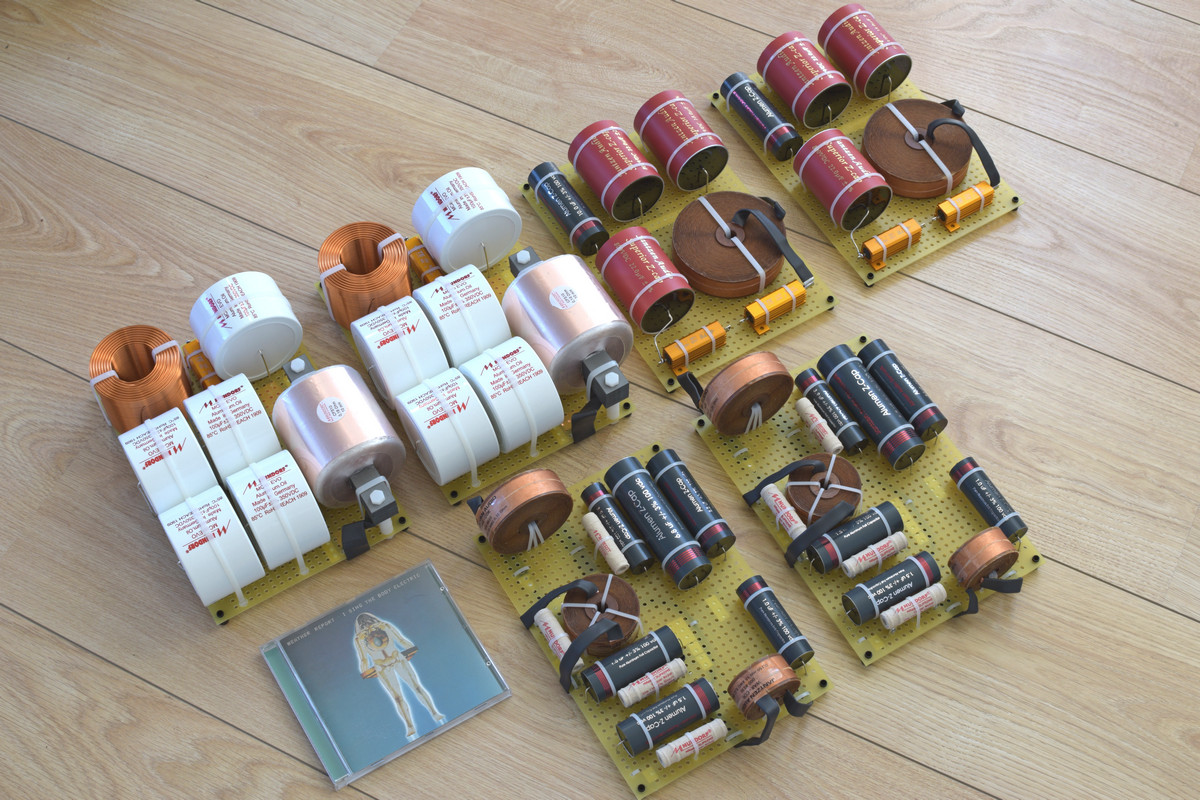Table Of Content

Additionally, there are templates for a wide array of typical filtersand compensation circuits. The CADframework allows implementation of any circuit or filter topology imaginable solong as it uses inductors, resistors, capacitors, operational amplifiers,potentiometers or logic gates. With the design goals in mind,the first step is to decide what kind of speaker will meet the technicalrequirements, budget and size limitations. For a first design, a 2-way loudspeaker should be the limit as 3-wayspeakers are a little more complicated to pull off properly. However, this article covers a 3-way designsince this is what is needed to meet the design goals without any magic. There are many different types of enclosuresand methods used to extend low frequency response.
Audio Equipment For All Occasions
If there are any issues, troubleshooting them early on can save time and frustration down the line. You’ll also want to ensure that all components are secure on the board before you begin soldering. They are direct radiator cones, commonly sized 5 to 12 inches in diameter to allow for more accurate reproduction of higher frequencies. Subwoofers are most commonly direct radiator cones, sized at either 12, 15, or 18 inches in diameter.

DIY Audio & Video Home Page
The combined systemresponse after optimization for this design is shown below. If you are just looking to getexcellent sounding speakers at much lower cost than what is availablecommercially, by all means, build someone else's fully documented project. There are a ton of projects out there that,in my opinion, obliterate most commercial offerings at the same total buildcost. Just realize that depending on thelevel of completion, you may still have to build a cabinet, solder a crossoverand troubleshoot inevitable issues. Inalmost all cases, the sale of a completed DIY speaker will not return the costof the parts of the project. If you arewilling to accept these risks then there is definitely something rewardingabout telling people that you built the great sounding loudspeakers sitting inyour living room.
Mid-range – tweeter crossover point
Revel PerformaBe F226Be Tower & C426Be Center Loudspeakers Review - Audioholics
Revel PerformaBe F226Be Tower & C426Be Center Loudspeakers Review.
Posted: Tue, 01 Dec 2020 08:00:00 GMT [source]
As a rule of thumb, the max frequency for agiven driver diameter can be equated by taking and dividing it by thedrivers effective diameter. For an 8”driver with an effective cone diameter of 7”, this means that the maximumcrossover frequency should not exceed 1937Hz. Having identified the appropriate audio range and crossover frequency is necessary before selecting any components for the speaker crossover design process.
A musician since childhood, his audio hardware roots go back to his days as a studio engineer in Nashville, TN in 2009. In 2011 he left the studio world to became a full-time journalist, with an emphasis on A/V, including TVs, speakers, headphones, and audio gear of all kinds. The author of hundreds of articles, Ryan has a passion for finding readers the best value on the best gear out there.
It'll tell you what capacitors and inductors you need to create a passive crossover design for either two speakers (a 2-way passive crossover) or three speakers (a 3-way passive crossover). In practical terms, they effectively “block” unwanted sound frequencies from reaching a speaker driver by greatly reducing, or attenuating, the input signal from a stereo or amplifier. Determiningthe port parameters for a cabinet is not complicated but it is best to use acalculator on the manufacturer’s website.
Example of a finished DIY speaker crossover
When all issaid and done, add an additional 10% to the calculated required internalcabinet volume. Once the internal volumeis determined, it is pretty simple to determine the required cabinetdimensions. Standing waves are greatlyreduced when cabinet internal dimensions are not the same or multiples of thesame distance apart.
Shopping for crossover components
No crossover can completely block out all frequencies beyond the crossoverpoint. Instead, it filters the frequencies in greater amounts as the frequencymoves away from the crossover point. How fast it filters the sound is determinedby the order of the crossover. A 1st order crossover filters 6 db/octave, a 2ndorder 12 db/octave, a 3rd order 18 db/octave, and so on.
If these items are not readily available in your workspace, you may need to purchase them from a local electronics store or online retailer. Additionally, having reliable electrical diagrams or plans will help ensure the success of your project by providing guidelines on where each part should be placed and how they should be wired together. Tweeters are relatively small electromagnetic or piezoelectric drivers capable of reproducing frequencies beyond 5 kHz. Don’t get to carried away with getting the response ruler flat because we have to fine tune everything anyway. As a result, when tinkering with one component, it can have minor effects in areas where you don’t expect. Also, be sure to verify their voltage rating – you’ll want a rating that’s at least equal to or higher than your amp or stereo’s output voltage generally.
The parameters can only becalculated when the 2 crossover points are 3.0 or 3.4 octaves apart. At this juncture, it isimportant to note that the T/S parameters from the loudspeaker manufacturers donot always match the actual T/S parameters. Many loudspeaker design programs and other tools allow extraction of theT/S parameters. If precision is key andyou do not want to risk cutting cabinets or ports twice then it is important todetermine the actual T/S parameters of a loudspeaker before moving forward withthe design.
Having this information laid out visually makes it easier to compare and assess various components within the same crossover design. Additionally, it allows for quick reference when soldering components together later on in the process. All that’s left now is connecting these pieces together in order to create a functioning speaker crossover design.
Sending a full-range signal to all speakers within the system, regardless of each speaker’s design, can be problematic. Firstly, each speaker is only capable of accuracy within a limited range. Sending frequencies outside of this range will waste the resources available to the speaker and yield inaccurate results. Additionally, low-frequency energy can cause damage to a high frequency driver. Speaker crossovers are implemented using either circuits enclosed within speaker cabinets or processing before the input of a power amplifier.
The second crossover frequency will be automatically calculated.The bandpass gain (the db gain for the midrange driver) is also automatically calculated. Madisound offers a wide selection of do-it-yourself loudspeaker kits for nearly all high-fidelity applications. These are typically superior in quality than comparable consumer audio products, at a fraction of the price. We provide the drivers and assembled crossovers for a majority of published DIY speaker designs available online.
Clearly, vented enclosuresallow significantly more power handling above 20Hz but there is no free lunchhere. Group delay is severely affectedby the vented alignment and this means that vented enclosures are sometimesconsidered to have a less desirable transient response. Considering the majority of music content isabove 40Hz, the group delay for the vented enclosure will suffice for thisproject. A passive design, which uses acoustic damping to reduce the unwanted sounds of a loudspeaker, requires precise filter selection for each individual driver. The end result should be a speaker crossover that meets all our performance requirements while delivering optimal sound quality.
The trick is to use multiple crossover components in such a way that they add up close to what you’re after. Electrolytic capacitors and air core inductors have a tolerance of about plus or minus 20% of their labeled value (+/-20%). More expensive parts may have 10% or lower tolerance which is nice but not really necessary.
It will also sound “weird” because the timing of the audio waves you hear conflicts. You can use my speaker crossover calculator to generate parts values to build your own capacitor, experiment with different values, and more. When you buy inductors, capacitors, and resistors there are usually only certain valuesavailable.










